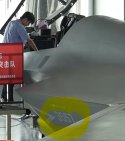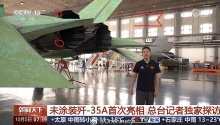You are using an out of date browser. It may not display this or other websites correctly.
You should upgrade or use an alternative browser.
You should upgrade or use an alternative browser.
J-35A fighter (PLAAF) + FC-31
- Thread starter ACuriousPLAFan
- Start date
Some kind of reduction for the layperson. Annoys me when people power scale RCS to mere numbers. Not that LM or AVIC would just publish their RCS plots.its pretty clear, they are talking about whole plane RCS.
Back on topic, does anyone know how progress on the new plant north of Shenyang is going? Wondering if there is any way to access satellite imagery more recent than the one on Baidu maps.
Copernicus browser. I posted an image recently on (IIRC) Chinese Aviation Industry thread.Some kind of reduction for the layperson. Annoys me when people power scale RCS to mere numbers. Not that LM or AVIC would just publish their RCS plots.
Back on topic, does anyone know how progress on the new plant north of Shenyang is going? Wondering if there is any way to access satellite imagery more recent than the one on Baidu maps.
Found a paper
Electromagnetic Scattering Characteristics of Outer Flaps to Axisymmetric Nozzle
It basically says that the gap between the outter layer petals (outer adjustment sheet) and the nozzle (the inner petals) increase rearward RCS.
A natural solution is to cover that gap as much as possible, that is the small caps on the engine nozles of J-35A, J-20 and F-35
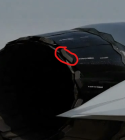
J-20
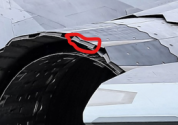
F-35
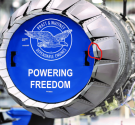
So I want to say that so far the only visible difference between engines of J-35A and J-35 is EM signature reduction measure, there is no visible evidence to indicate that they are two different engines of different generations, in the same way as many different nozzles of WS-10 on J-20, J-10 and sinoflankers.
We know that both J-35 and A are in their early depolyment/integration phase. Navy's priority now and in the coming year is to get the aircraft land and launch from the carrier and train enough pilots, a small improvement to EM signature isn't so high priority before entering battle operation. They got few earlier variant of engines to work with and they do the job well.
Electromagnetic Scattering Characteristics of Outer Flaps to Axisymmetric Nozzle
It basically says that the gap between the outter layer petals (outer adjustment sheet) and the nozzle (the inner petals) increase rearward RCS.
A natural solution is to cover that gap as much as possible, that is the small caps on the engine nozles of J-35A, J-20 and F-35

J-20

F-35

So I want to say that so far the only visible difference between engines of J-35A and J-35 is EM signature reduction measure, there is no visible evidence to indicate that they are two different engines of different generations, in the same way as many different nozzles of WS-10 on J-20, J-10 and sinoflankers.
We know that both J-35 and A are in their early depolyment/integration phase. Navy's priority now and in the coming year is to get the aircraft land and launch from the carrier and train enough pilots, a small improvement to EM signature isn't so high priority before entering battle operation. They got few earlier variant of engines to work with and they do the job well.
Last edited:
Allegedly J-35A's cockpit (can't confirm if it's actually the A variant specifically):
View attachment 162042
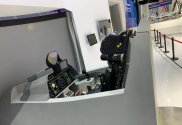
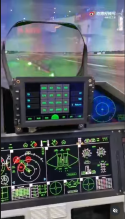
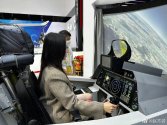
Looks similar
Can't tell because the only publically known difference is the control stick location. J-35 has it in the middle while A has it on the side.Allegedly J-35A's cockpit (can't confirm if it's actually the A variant specifically):
View attachment 162042
The simulator is certainly J-35A because the stick is on the side.

